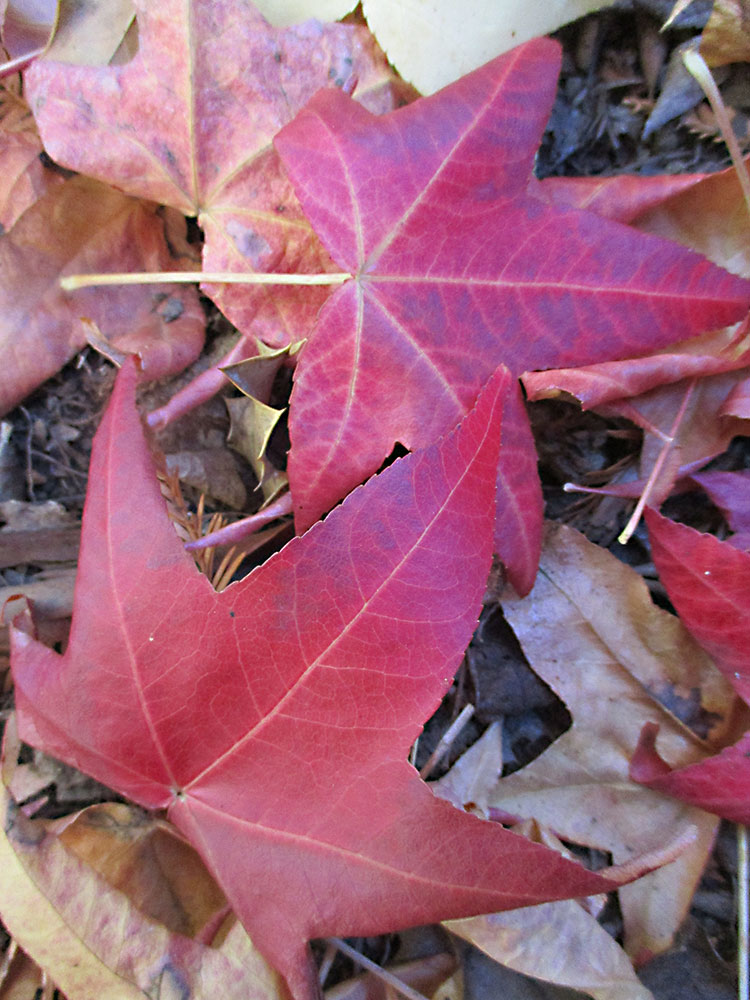By Tony Tomeo
Sept. 22 was the equinox. Here in the Northern Hemisphere, days will get slightly shorter as nights will get slightly longer. The intensity of the sunlight will diminish as the sun moves farther to the south. The weather will of course get cooler. In this particular climate, the rainy season will begin. Deciduous plants, as well as some evergreen plants, will respond accordingly to the changes.
Deciduous plants defoliate as they go dormant for part of the year. A few defoliate through hot and dry summer weather. Otherwise, almost all deciduous plants defoliate for dormancy through cool and stormy winter weather. They are more resilient without foliage that is sensitive to both frost and wind. While days are short and sunlight is diminished, foliage would not be very active anyway.
The foliage of many deciduous plants gets remarkably colorful during defoliation. Sweetgum, pistache and ginkgo are famously colorful. However, many deciduous plants, such as valley oak and silver maple, are not impressively colorful. Regardless, all deciduous plants that defoliate for winter will eventually start to do so, or have started already. Several evergreen plants shed debris too.
Gravity is a force that is more reliable than weather. It pulls foliar debris downward onto roofs, roadways, decks, patios, lawns and whatever happens to be below deciduous trees.
The timing of defoliation is ironic. Gutters and downspouts that were empty all summer now collect debris as the rainy season begins. They may need cleaning more than once if deciduous trees above defoliate slowly. While patios and decks get less use, they need more raking to avoid staining. Fallen leaves promote rot in turf grass and ground covers, and inhibit penetration of sunlight.
At this time of year, it is difficult to believe that evergreen trees are generally messier than deciduous trees. Deciduous trees tend to defoliate only once annually, although some drop bloom or fruit separately. Evergreen trees drop about as much debris, but do so for a longer season or continuously throughout the year.
•••
Valley Oak
From the northern end of the Sacramento Valley to Santa Catalina Island, valley oak, Quercus lobata, is as Californian as Valley Girl. It inhabits mixed riparian forests and low hillsides up to about 2,000 feet, but prefers alluvial valley meadows in between. Although unpopular for landscaping, it sometimes self sows into home gardens. New landscapes sometimes develop around old trees.
Valley oak is one of the biggest of oaks, and the tallest oak of North America. Mature trees can be more than a hundred feet tall, and several centuries old. Trunks may be more than ten feet wide. Such big trees make big messes of acorns and deciduous foliage, which shed for weeks. Unfortunately, old valley oaks within new landscapes are susceptible to spontaneous limb failure and rot.
Where space is sufficient, new valley oaks are for future generations. They develop their distinctively sculptural branch structure slowly through several decades. If irrigation is not excessive, roots are remarkably complaisant.
The evenly furrowed gray bark is rustically distinguished. The elegantly lobed leaves are about three inches long and half as wide. Yellowish autumn color is subdued.
•••
Horticulturist Tony Tomeo can be contacted at tonytomeo.com.
